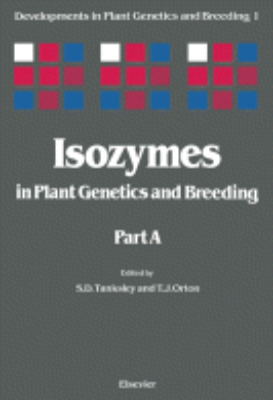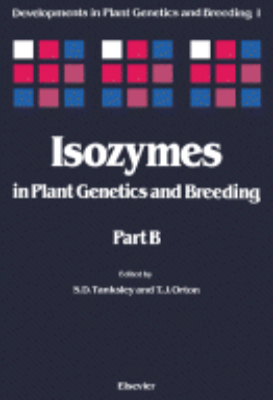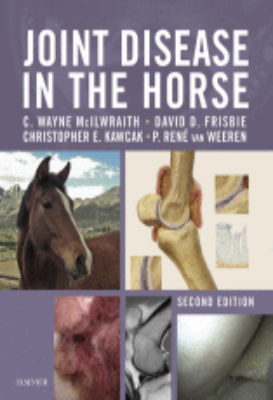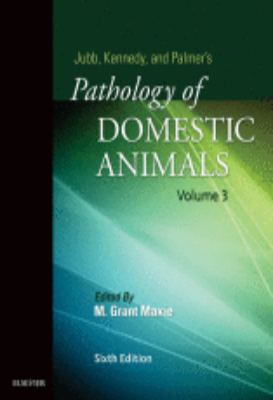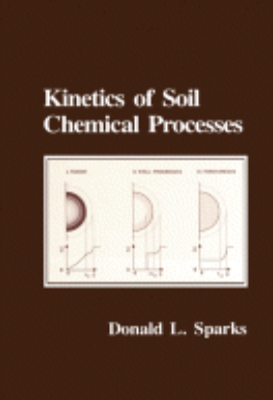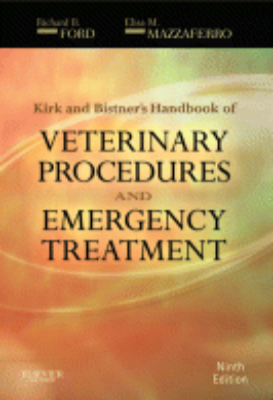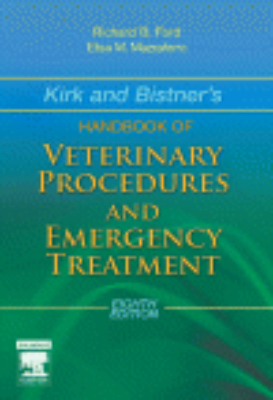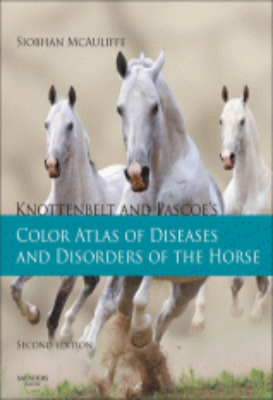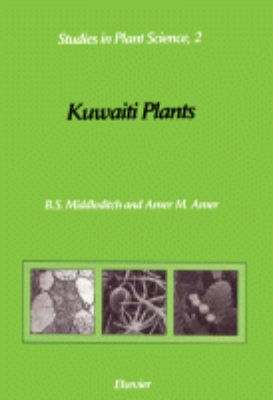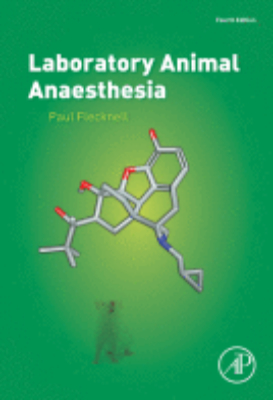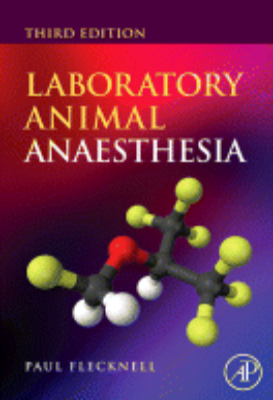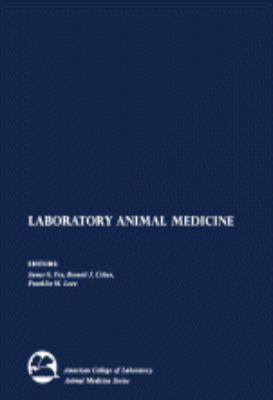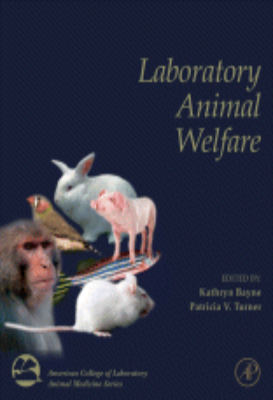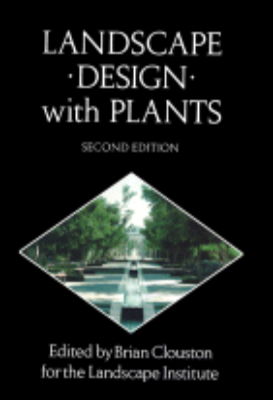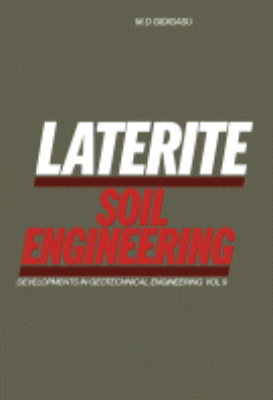ebooks
Joint Disease in the Horse
Dr. McIlwraiths Joint Disease in the Horse, 2nd Edition is the only book to give you a full account of equine joint disease, combining a thorough, up-to-date survey of scientific advances with a practical guide to both medical and surgical treatments. With contributions from nationally and internationally recognized pioneers in the field, this groundbreaking text offers an overview of joint structure and function and translates the latest information on basic joint pathobiology into practical application for the clinician. Step-by-step guidance on injection techniques and medications, along with a survey of practical arthroscopic surgery and developments, make it a truly indispensable reference for all equine veterinarians treating sports and racing horses.
Jones’s Animal Nursing
In the tradition of this well established text, the fifth edition is enlarged and updated to cover recent developments in the field of animal nursing. In the four years since the previous edition was published the position of the Veterinary Nurse has become professionally recognized and a new syllabus for the Royal College of Veterinary Surgeons nursing scheme has been established. This has helped define the depth of knowledge required of trainee nurses in their preparation for examinations. In the light of the new syllabus there is a new chapter on Radiography, the chapters on First Aid, Basic Nursing Care, The Practice of Nursing and Surgical Nursing have been extensively revised, and the chapter on Medical Nursing has been lengthened. The contributions, from 27 experts in the field, are highly illustrated and suggestions for further reading are provided at the end of each chapter.
Jubb Kennedy & Palmer’s Pathology of Domestic Animals: Volume 1
"With an emphasis on the disease conditions of dogs, cats, horses, swine, cattle and small ruminants, Jubb, Kennedy, and Palmer's Pathology of Domestic Animals, 6th Edition continues its long tradition of being the most comprehensive reference book on common domestic mammal pathology. Using a body systems approach, veterinary pathology experts provide overviews of general system characteristics, reactions to insult, and disease conditions that are broken down by type of infectious or toxic insult affecting the anatomical subdivisions of each body system. The sixth edition now boasts a new full-color design, including more than 2,000 high-resolution images of normal and abnormal organs, tissues, and cells. Updated content also includes evolved coverage of disease agents such as the Schmallenberg virus, porcine epidemic diarrhea virus, and the porcine deltacoronavirus; plus new information on molecular-based testing, including polymerase chain reaction (PCR) and in-situ hybridization, keep you abreast of the latest diagnostic capabilities. Key Features. Updated content includes new and evolving pathogens and diagnostic techniques.. Updated bibliographies give readers new entry points into the rapidly expanding literature on each subject.. NEW! High-resolution color images clearly depict the diagnostic features of hundreds of conditions.. NEW! Introduction to the Diagnostic Process chapter illustrates the whole animal perspective and details the approaches to systemic, multi-system, and polymicrobial disease.. NEW! Coverage of camelids is now included in the references widened scope of species.. NEW! Team of 30+ expert contributors offers the latest perspective on the continuum of issues in veterinary pathology.. NEW! Expanded resources on the companion website include a variety of helpful tools such as full reference lists with entries linked to abstracts in Pub Med and bonus web-only figures.. NEW! Full-color design improves the accessibility of the text."
Jubb, Kennedy & Palmer’s Pathology of Domestic Animals
"The 5th edition of Jubb, Kennedy, and Palmer's Pathology of Domestic Animals continues the long tradition of this classic set of volumes as the most comprehensive reference book published on the topic of pathology of the common domestic mammals, with emphasis on disease conditions of cattle and small ruminants, swine, horses, dogs and cats. Using a body systems approach, recognized authorities in their fields provide overviews of general characteristics of the system, reactions to insult, and disease conditions broken down by type of infectious or toxic insult affecting the anatomical subdivisions of each body system. Since the publication of the 4th edition in 1993, much has changed. Disease agents, such as Bovine viral diarrhea virus (BVDV) type 2, Porcine reproductive and respiratory syndrome virus (PRRSV), Porcine circovirus 2, Hendra virus, and Leptospira spp., have emerged or further evolved. Molecular-based testing, including polymerase chain reaction (PCR) and in-situ hybridization, have allowed further understanding of pathogenesis of disease, and have greatly furthered our diagnostic capabilities. Key Features. Thoroughly revised text, including new or evolving pathogens and new diagnostic techniques.. Approximately 470 new illustrations.. Maintains the currency of the text, assists the reader in putting new conditions into perspective.. Updating of the Bibliography on each subject gives readers new entry points into the rapidly expanding literature on each subject.. Illustrations of new conditions or agents.. Reader-friendliness improved through highlighting of text, bullet-point lists, italics, diagnostic hints."
Jubb, Kennedy & Palmer’s Pathology of Domestic Animals: Volume 2
"With an emphasis on the disease conditions of dogs, cats, horses, swine, cattle and small ruminants, Jubb, Kennedy, and Palmer's Pathology of Domestic Animals, 6th Edition continues its long tradition of being the most comprehensive reference book on common domestic mammal pathology. Using a body systems approach, veterinary pathology experts provide overviews of general system characteristics, reactions to insult, and disease conditions that are broken down by type of infectious or toxic insult affecting the anatomical subdivisions of each body system. The sixth edition now boasts a new full-color design, including more than 2,000 high-resolution images of normal and abnormal organs, tissues, and cells. Updated content also includes evolved coverage of disease agents such as the Schmallenberg virus, porcine epidemic diarrhea virus, and the porcine deltacoronavirus; plus new information on molecular-based testing, including polymerase chain reaction (PCR) and in-situ hybridization, keep you abreast of the latest diagnostic capabilities. Key Features. Updated content includes new and evolving pathogens and diagnostic techniques.. Updated bibliographies give readers new entry points into the rapidly expanding literature on each subject.. NEW! High-resolution color images clearly depict the diagnostic features of hundreds of conditions.. NEW! Introduction to the Diagnostic Process chapter illustrates the whole animal perspective and details the approaches to systemic, multi-system, and polymicrobial disease.. NEW! Coverage of camelids is now included in the references widened scope of species.. NEW! Team of 30+ expert contributors offers the latest perspective on the continuum of issues in veterinary pathology.. NEW! Expanded resources on the companion website include a variety of helpful tools such as full reference lists with entries linked to abstracts in Pub Med and bonus web-only figures.. NEW! Full-color design improves the accessibility of the text."
Jubb, Kennedy & Palmer’s Pathology of Domestic Animals: Volume 3
"With an emphasis on the disease conditions of dogs, cats, horses, swine, cattle and small ruminants, Jubb, Kennedy, and Palmer's Pathology of Domestic Animals, 6th Edition continues its long tradition of being the most comprehensive reference book on common domestic mammal pathology. Using a body systems approach, veterinary pathology experts provide overviews of general system characteristics, reactions to insult, and disease conditions that are broken down by type of infectious or toxic insult affecting the anatomical subdivisions of each body system. The sixth edition now boasts a new full-color design, including more than 2,000 high-resolution images of normal and abnormal organs, tissues, and cells. Updated content also includes evolved coverage of disease agents such as the Schmallenberg virus, porcine epidemic diarrhea virus, and the porcine deltacoronavirus; plus new information on molecular-based testing, including polymerase chain reaction (PCR) and in-situ hybridization, keep you abreast of the latest diagnostic capabilities. ""a core text in veterinary pathology""Reviewed by: Alexander Stoll, on behalf of Wikivet, November 2015 Key Features. Updated content includes new and evolving pathogens and diagnostic techniques.. Updated bibliographies give readers new entry points into the rapidly expanding literature on each subject.. NEW! High-resolution color images clearly depict the diagnostic features of hundreds of conditions.. NEW! Introduction to the Diagnostic Process chapter illustrates the whole animal perspective and details the approaches to systemic, multi-system, and polymicrobial disease.. NEW! Coverage of camelids is now included in the references widened scope of species.. NEW! Team of 30+ expert contributors offers the latest perspective on the continuum of issues in veterinary pathology.. NEW! Expanded resources on the companion website include a variety of helpful tools such as full reference lists with entries linked to abstracts in Pub Med and bonus web-only figures.. NEW! Full-color design improves the accessibility of the text."
Kinetics of Soil Chemical Processes
The kinetics of reactions in soil and aquatic environments is a topic of extreme importance and interest. To properly understand the fate of applied fertilizers, pesticides, and organic pollutants with time, and to thus improve nutrient availability and the quality of our groundwater, one must study kinetics. This is the first compre
Kingsmill Plantations 1619 1800
Kingsmill Plantations, 1619-1800: Archaeology of Country Life in Colonial Virginia covers the historical and archaeological aspects, along with reconstruction attempt of a typical setting of seven plantation sites at Kingmill, near Williambsburg, Virginia. This book contains five chapters that focus on the settlement and development of Kingsmills homesteads and estates. Other chapters provide the names and personalities for the plantation sites at Kingmill. Considerable archaeological findings concerning the sites manor, tenements, mansions, houses, quarters, and outbuildings are discussed. The remaining chapters deal with the evaluation of the sites gardens, wells, waste, pots, bones, and status. This book is intended primarily for architectural historians, archaeologists, and anthropologists.
Kirk & Bistner’s Handbook of Veterinary Procedures and Emergency Treatment
Provide expert care for cats and dogs! Kirk and Bistner's Handbook of Veterinary Procedures and Emergency Treatment, 9th Edition covers not only the management of emergency conditions, but also strategies for dealing with hundreds of routine diagnostic and treatment challenges in small animals. Its user-friendly format provides instant access to vital information -- making it an ideal resource in emergency situations -- and it is conveniently organized by both body systems and presenting signs to help you easily reach a diagnosis and determine a treatment plan for all clinical situations. Written by veterinary experts Richard Ford and Elisa Mazzaferro, Kirk and Bistner's Handbook of Veterinary Procedures and Emergency Treatment provides current guidelines for small animal emergency care and the diagnostic procedures most commonly performed in a busy, team-oriented practice.
Kirk and Bistner’s Handbook of Veterinary Procedures and Emergency Treatment
This thoroughly updated 8th edition comprehensively covers the management of emergency conditions, as well as hundreds of diagnostic and treatment challenges in small animals. The user-friendly format provides instant access to vital information, making it an ideal resource in emergency situations. Includes a section dedicated to the clinical evaluation of patients using both organized body systems and problems list approaches. It also offers guidance on clinical signs and symptoms, laboratory tests, diagnosis, and treatment.
Knottenbelt and Pascoe’s Color Atlas of Diseases and Disorders of the Horse
A unique collection of photographic illustrations of the major equine disorders, providing both qualified practitioners and veterinary students with an invaluable guide to greater diagnostic accuracy, treatment options, and a wider understanding of the processes and signs of equine disorders. The systematic presentation of disorders along with the icon-based key points system of evaluation gives unparalleled ease of access and use. Conditions presented are gathered from around the world, making for a resource of universal application that is a major aid to the rapid visual recognition and interpretation of clinical signs that are vital elements of success in veterinary practice.
Laboratory Animal Anaesthesia: Fourth Edition 2015
"Laboratory Animal Anaesthesia, Fourth Edition provides a basic guide to anaesthesia for a very diverse audience needing content, with straight-forward, structured style of writing. Updated with effects of anaesthetics in different laboratory species, including sources of dose rates will be incorporated into tabular material. New information on pain assessment and pain management will be covered, and an increased emphasis on rats and mice for anaesthesia and perioperative care. With newly revised, full color illustrations to facilitate best learning, Laboratory animal Anesthesia, Fourth Edition provides procedures, key points and invaluable advice from a well-known and respected veterinary anesthetist and scientist with over 30 years of experience in the field. Key Features. Written by a veterinary anesthetist and scientist with over 30 years' experience in the field, and who is actively engaged in research in this area. Focuses on procedures involving rats and mice used in research. Provides those with limited experience of anesthesia with the information they need to carry our procedures effectively, safely, and humanely, as well as those with more experience to continue a career with laboratory animal model research. Includes rapid, easily accessed information using tabulated summaries"
Laboratory Animal Anaesthesia: Second Edition 1996
The use of safe and effective anaesthetic techniques can have a major influence both on the welfare of laboratory animals and the quality of the research results obtained in using them. In times of justified public and scientific concerns over such issues, the need for clear and concise advise on good technique is of paramount importance.However, much anaesthetic work in the laboratory is carried out by research workers and support staff who have not benefited from specialist veterinary training. This second edition of Paul Flecknell's invaluable guide gives just the sort of clear concise practical information such people need. It follows all the key stages from preoperative care thorough anesthesia itself to the post - anaesthetic recovery period.Following these general sections, there are specific instructions on regimes for particular laboratory animals, with advice on recommended agents, dosages and special procedures of importance. Particular emphasis is placed on welfare, pain reduction and proper post - procedural care.The Second Edition of this now standard guide adds the results of the latest research, most effective anesthetics and useful illustrations of procedures and equipment and broadens the original book's coverage to include notes on fish, amphibia, reptiles and birds.It will prove an essential addition to the library of any laboratory where animals are used for research.
Laboratory Animal Anaesthesia: Third Edition 2009
Laboratory Animal Anesthesia looks at recent significant developments in anesthetic practices in laboratory experiments involving animals. It also provides information about basic standards for proper use of anesthesia. In addition, it examines the equipment and different anesthetic agents that are used in performing an experiment on animals. The book also discusses the profound effects of anesthesia on the physiological aspect of the animals body systems, such as hypothermia and respiratory depression. The book addresses the proper management and care that should be provided for the animals that undergo anesthesia. Furthermore, it covers different anesthetic procedures that should be used on various kinds of small animals intended for laboratory experiments. The main goal of this book is to provide information about the different anesthetic agents used in experiments, and the proper standards to follow when using anesthetics on lab animals. Key Features New edition provides new information on anesthesia and analgesia, and has an extensively revised and updated bibliography Provides a balanced consideration of the needs of scientific research and the welfare of laboratory animals Written by a veterinary anesthetist and scientist with over 30 years' experience in the field, and who is actively engaged in research in this area Provides rapid, easily accessed information using tabulated summaries Provides those with limited experience of anesthesia with the information they need to carry our procedures effectively, safely, and humanely Provides sufficient depth for the more experienced anesthetist moving to this field
Laboratory Animal Medicine: 1984
Laboratory Animal Medicine is a compilation of papers that deals with the diseases and biology of major species of animals used in medical research. The book discusses animal medicine, experimental methods and techniques, design and management of animal facilities, and legislation on laboratory animals. Several papers discuss the biology and diseases of mice, hamsters, guinea pigs, and rabbits. Another paper addresses the dog and cat as laboratory animals, including sourcing of these animals, housing, feeding, and their nutritional needs, as well as breeding and colony management. The book also describes ungulates as laboratory animals, including topics on sourcing, husbandry, preventive medical treatments, and housing facilities. One paper addresses primates as test animals, covering the biology and diseases of old world primates, Cebidae, and ferrets. Some papers pertain to the treatment, diseases, and needed facilities for birds, amphibians, and fish. Other papers then deal with techniques of experimentation, anesthesia, euthanasia, and some factors (spontaneous diseases) that complicate animal research. The text can prove helpful for scientists, clinical assistants, and researchers whose work involves laboratory animals.
Laboratory Animal Medicine: Second Edition 2002
A volume in theAmerican College of Laboratory Animal Medicineseries, this second edition has over 40% new material, including the addition of six new topics and many others that are completely rewritten. The book comprehensively covers the biological and disease aspects of laboratory animal medicine while examining other aspects such as the biohazards associated with the use of animal experimentation and factors complicating the bioethics of animal research.
Laboratory Animal Medicine: Third Edition 2015
"Laboratory Animal Medicine, Third Edition, is a fully revised publication from the American College of Laboratory Medicines acclaimed blue book series. It presents an up-to-date volume that offers the most thorough coverage of the biology, health, and care of laboratory animals. The book is organized by species, with new inclusions of chinchillas, birds, and program and employee management, and is written and edited by known experts in the fields. Users will find gold-standard guidance on the study of laboratory animal science, as well as valuable information that applies across all of the biological and biomedical sciences that work with animals. Key Features. Organized by species for in-depth understanding of biology, health, and best care of animals. Features the inclusion of chinchillas, quail, and zebra finches as animal models. Offers guidance on program and employee management. Covers regulations, policies, and laws for laboratory animal management worldwide"
Laboratory Animal Welfare
Laboratory Animal Welfare provides a comprehensive, up-to-date look into the new science of animal welfare within laboratory research. Animals specifically considered include rodents, cats and dogs, nonhuman primates, agricultural animals, avian animals and aquatic animals. The book examines the impact of experiment design and environment on animal welfare, as well as emergency situations and euthanasia practices. Readers will benefit from a review of regulations and policy guidelines concerning lab animal use, as well as information on assessing animal welfare. With discussions of the history and ethics of animals in research, and a debate on contemporary and international issues, this book is a go-to resource for laboratory animal welfare.
Laboratory Animals
"Laboratory Animals: Regulations and Recommendations for Global Collaborative Research is the only publication to offer a compilation of standards across the world in the care, welfare and use of animals in research. Timely in the new legislation in numerous regions of the world, this book provides the information in easily accessible, readable language. For professionals across laboratory animal science and biomedical research, Laboratory Animals: Regulations and Recommendations for Global Collaborative Research provides a broad picture of the regulations required in other areas of the world and is essential to appropriately manage animal care and use programs. Key Features. Offers a worldwide view and global compilation of regulations, guidelines and recommendations for laboratory animal research. Saves valuable time researching different regional legislation and regulations. Provides insight into factors that play roles in the regulatory framework for countries and geographic regions. Written in ""laymans"" terms to easily understand legislation and regulations"
Land Water and Mineral Resources in Science Education
Land, Water and Mineral Resources in Science Education presents the proceedings of a workshop that tackles land, water, and mineral resources, held in Bangalore, India in August 1985. The book is divided into four parts. Part 1, which serves as an introduction, covers the problems related to and teaching about the use of land, water, and mineral resources. Part 2 discusses the viewpoints and problems of land use and its educational implications. Part 3 talks about the problems and necessary developments for water resources, and Part 4 tackles the educational aspect of mineral resources and their nature, as well as mineral exploration. The text is recommended for educators who intend to improve the teaching of natural resources, the issues and problems that surround them, and their importance to humanity. The book will also be appreciated by those who work in fields that deal with natural resources.
Landscape Design with Plants
Landscape Design with Plants, Second Edition focuses on landscape architecture. The book first discusses trees in the countryside. Adaptation to locality, self-town vegetation, designs for both short-term and long-term effect, ecological planting, and plant associations are described. The text looks at planting for forestry. The need for afforestation; forest habitat; scale of the forest mosaic; and woodlands as visual elements in the landscape are considered. The book puts emphasis on trees in urban areas, shrubs and groundcover, and herbaceous plants and bulbs. The text also focuses on water plants. The use of water plants in garden design, aquatic communities, and historical background are discussed. The book underscores the use and management of plant species native to Britain in landscaping; urban landscape and roof gardens; and how to transplant semi-mature trees. The text also describes reclamation and planting of industrial and urban wastelands; landscaping of reservoir margins; and the relationship of plants and air pollution. The book also puts emphasis on the use of vegetation in slope stabilization; planting in tropical lowland areas; planting in hot, arid climates; and the functional use of Australian plants. The selection is a must for readers interested in landscaping.
Leafhopper Vectors and Plant Disease Agents
Leafhopper Vectors and Plant Disease Agents is the second in a multivolume series on vectors, vector-borne disease agents, and plant disease spread. This text aims to collect findings in leafhopper vector research, to suggest promising frontiers for further research, and to call attention to possible practical applications of understanding of leafhopper-pathogen-plant interactions. This book is organized into five parts. Opening chapters on the taxonomy, bionomics, and worldwide importance of leafhopper and planthopper vectors are appropriately relegated to Parts I and II. Part III focuses on vector-virus interactions of leafhopper-, planthopper-, and aphid-borne viruses and virus-induced, cytopathological changes in vectors. This part also explains the interactions of mycoplasmalike organisms (MLOs) and viruses in dually infected leafhoppers, planthoppers, and plants, as well as the transitory vector-virus interactions. The artificial and aseptic rearing of vectors, microinjection technique, vector tissue culture, and spiroplasmas and its vectors are all covered in Part IV. Part V contains chapters on specific leafhopper-borne viruses and MLOs, leafhopper and planthopper vector control, leafhopper-borne pathogens of corn-stunting diseases, Western X disease, and leafhopper-borne xylem-restricted pathogens. This text will be valuable for students, teachers, and researchers of vector-pathogen-plant relationships. Its in-depth coverage of leafhoppers and planthoppers as vectors makes this book ideally suited as a supplemental text in graduate entomology and plant pathology courses on insect transmission of plant disease agents.
Lepidoptera Genetics
Lepidoptera Genetics provides a systematic account of the genetics and karyology of Lepidoptera. Topics covered include the use of biometry in genetic studies; population genetics and polymorphism; the rise of industrial melanism; and the evolution of mimicry. The genetics of Rhopalocera and Heterocera is also discussed. This book is comprised of eight chapters and begins with an overview of Lepidoptera species and their genetics, paying particular attention to color and pigmentation, breeding, and resistance to insecticides, as well as the effect of seasonal variations and the environment on Lepidoptera. The next chapter outlines the tenets of genetics that are of value for Lepidoptera research, including particulate heredity, random assortment, sex-linked inheritance, maternal inheritance, and mosaicism. The reader is methodically introduced to the application of biometry to the study of Lepidoptera genetics; the evolution of mimicry in Lepidoptera; and the known heredity of Rhopalocera and Heterocera. The final chapter examines the karyology of Lepidoptera, focusing on the haploid karyotype, polyploidy, chiasmata frequency, supernumerary chromosomes, and sex chromatin. This monograph will be a useful resource for entomologists, geneticists, and biologists.

